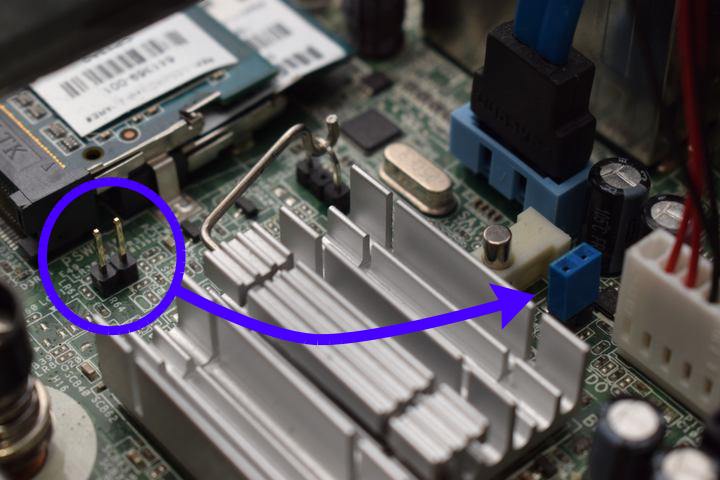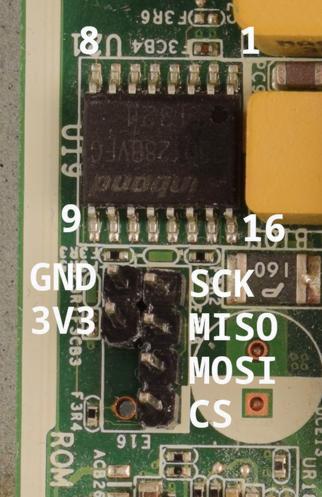127 lines
4.8 KiB
Markdown
127 lines
4.8 KiB
Markdown
---
|
|
title: HP Compaq Elite 8300 USDT
|
|
x-toc-enable: true
|
|
...
|
|
|
|
<div class="specs">
|
|
<center>
|
|
<img tabindex=1 alt="HP Compaq Elite 8300 USDT" class="p" src="https://av.libreboot.org/hp8300usdt/hp8300usdt.jpg" /><span class="f"><img src="https://av.libreboot.org/hp8300usdt/hp8300usdt.jpg" /></span>
|
|
</center>
|
|
|
|
| ***Specifications*** | |
|
|
|---------------------------|---------------------------------------------|
|
|
| **Manufacturer** | HP |
|
|
| **Name** | Compaq 8300 Elite USDT |
|
|
| **Released** | 2012 |
|
|
| **Chipset** | Intel Q77 |
|
|
| **CPU** | Intel Sandy/Ivy Bridge (65W max.) |
|
|
| **Graphics** | Intel HD Graphics or MXM graphics card |
|
|
| **Memory** | Up to 16GB (2x8GB) |
|
|
| **Architecture** | x86_64 |
|
|
| **Intel ME/AMD PSP** | Present, neutered |
|
|
| **Flash chip** | SOIC-16 16MiB |
|
|
|
|
# Introduction
|
|
|
|
This is a small but powerful desktop using Sandy or Ivy Bridge CPUs (of up to 65W TDP).
|
|
It has a slot for a discrete MXM graphics card, but that is currently untested.
|
|
|
|
Libreboot has support for this, in the Git repository and
|
|
release versions after (but not including) 20230423.
|
|
|
|
These features are tested and confirmed working:
|
|
|
|
* Native raminit with both DIMMs (up to 2x8GB)
|
|
* Libgfxinit textmode and framebuffer on both DisplayPorts and VGA
|
|
* SeaBIOS and GRUB payloads
|
|
* External USB2 and USB3 ports: they all work
|
|
* USB 3.0 SuperSpeed on Linux-libre (rear, 4 ports)
|
|
* Ethernet
|
|
* Mini-PCIe WLAN
|
|
* SATA: 2.5" SSD and optical drive bay
|
|
* PS/2 keyboard and mouse
|
|
* S3 suspend and resume, wake using USB keyboard
|
|
* Headphone output, line out, internal speaker
|
|
* Wake on LAN
|
|
* Rebooting
|
|
|
|
Untested (and likely don't work):
|
|
|
|
* mSATA
|
|
* eSATA
|
|
* Discrete MXM GPU
|
|
|
|
# Installation
|
|
|
|
## Internal flashing
|
|
|
|
Internal flashing is possible and very simple on this board:
|
|
|
|
First, make sure the computer is powered off. Remove the top cover.
|
|
|
|
The jumper labelled "FDO" (for Flash Descriptor Override) needs to be shorted.
|
|
That removes all write protections on this board.
|
|
|
|
We can borrow a shunt from another header on the board: PSWD. It is right
|
|
next to the SO-DIMM RAM slots. Move it to the FDO header between the quartz
|
|
crystal (small metal cylinder) and the power cable for the optical drive.
|
|
|
|

|
|
|
|
Boot into an OS of your choice (that has flashrom support). When using Linux,
|
|
you need to supply the kernel parameter `iomem=relaxed`.
|
|
|
|
The BIOS should no longer impose any write-protections.
|
|
You can now use `flashrom -p internal` freely.
|
|
|
|
Take a backup of the original BIOS:
|
|
|
|
flashrom -p internal -r oem_bios
|
|
|
|
This is an Ivy Bridge board which means that a neutered ME image
|
|
is required if you wish to flash the ME region. Libreboot's
|
|
build system automatically downloads, neuters (using me_cleaner)
|
|
and inserts this if compiling from source.
|
|
|
|
If you're using Libreboot release ROM images, the ME image has been
|
|
scrubbed and you must re-insert it.
|
|
Use the information on this guide to know how to do that:
|
|
|
|
[Insert binary blobs on Intel Sandybridge/Ivybridge/Haswell
|
|
platforms](../install/ivy_has_common.md)
|
|
|
|
You can now flash libreboot:
|
|
|
|
flashrom -p internal -w libreboot.rom
|
|
|
|
You can now move the jumper back to its original place.
|
|
By default, Libreboot applies no write-protection, so
|
|
updating it can be done without the jumper anyway.
|
|
|
|
## External flashing
|
|
|
|
Unbricking is possible by external flashing. You first need to remove
|
|
the optical disk drive and 2.5" HDD/SSD and the metal bracket that
|
|
supports them. This requires you to open one torx screw in total.
|
|
|
|
The SOIC-16 flash chip is located on the edge of the board
|
|
near the group of yellow cubes. Follow the
|
|
[general SPI flashing guide](http://localhost:8080/docs/install/spi.html).
|
|
|
|

|
|
|
|
You might need to power the board by plugging it in. In that case,
|
|
do not connect the Vcc (3v3) pin of the flash chip.
|
|
Also make sure the board doesn't fully power on (that is, boot).
|
|
|
|
If you don't have a suitable clip, you can also use the ROM_RCVRY header
|
|
right next to the flash chip. By default only the footprint is present,
|
|
so you have to solder a pin header of your own. End result can be seen
|
|
and the pinout can be seen in the photo earlier. Consult the HP service
|
|
manual (page 241) on how to remove the motherboard from the chassis.
|
|
|
|
<http://web.archive.org/web/20210305234331/https://h10032.www1.hp.com/ctg/Manual/c03612798.pdf>
|
|
|
|
If you do this, you have to reapply thermal paste.
|
|
That might be a good idea anyway, considering how old these are getting
|